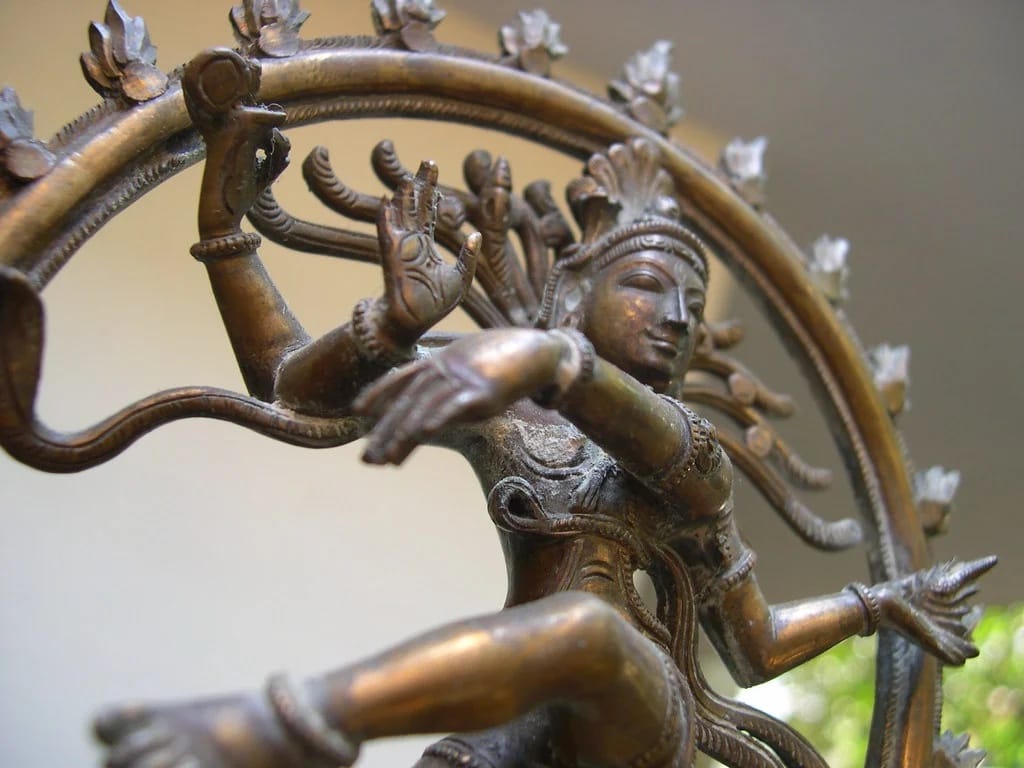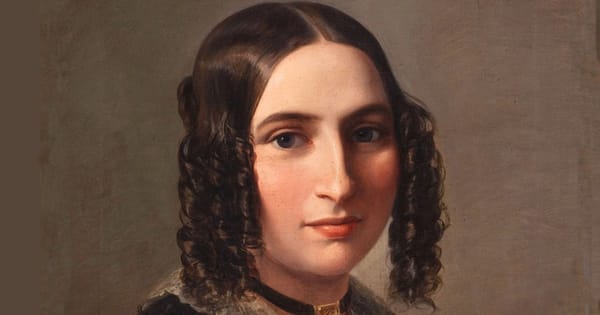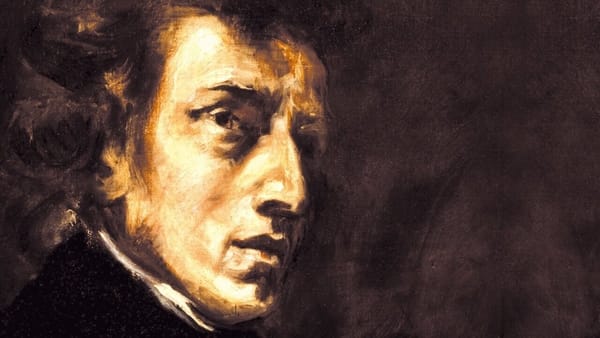Natya Sastra: A Comprehensive Guide to Indian Performing Arts and Philosophical Aesthetics

The Nāṭya Śāstra, originally written in Sanskrit (नाट्य शास्त्र) and found in Kannada (ನಾಟ್ಯಶಾಸ್ತ್ರ) and Telugu (నాట్య శాస్త్ర) translations, stands as a seminal Sanskrit treatise on the performing arts. Traditionally attributed to the sage Bharata, its origin’s exact timing spans estimates from 500 BCE to 500 CE, with its first comprehensive compilation situated between 200 BCE and 200 CE, though definitive dating remains elusive.
Comprising 36 chapters and approximately 6,000 poetic verses, the text serves as a comprehensive guide to the performing arts. It encompasses a wide spectrum of subjects, including dramatic composition, play structure, stagecraft, acting genres, body language, make-up, costumes, art direction, musical scales, instruments, and the fusion of music with performance.
The significance of the Nāṭya Śāstra lies in its encyclopedic nature, profoundly influencing Indian dance, music, and literary traditions. Its aesthetic theory of “Rasa” asserts that while entertainment is an outcome of performance arts, it isn’t the primary objective. Instead, the text advocates transporting the audience into a realm of wonder, allowing them to delve into their consciousness, ponder spiritual and moral questions, and experience an alternate reality.
This seminal work also inspired secondary literature, such as the Abhinavabharati, a classic Sanskrit commentary written by the 10th-century scholar Abhinavagupta.
The title “Nāṭya Śāstra” itself comprises two Sanskrit words: “Nāṭya,” derived from “Naṭa,” signifying “act” or “representation,” and “Śhāstra,” which denotes “precept,” “rules,” or a comprehensive treatise within Indian literary context.
Despite its widespread impact, the exact origins of the Nāṭya Śāstra remain shrouded in ambiguity. While estimates about its composition vary, scholars contend that it might have commenced in the 1st millennium BCE, evolving over time. Surviving in multiple manuscript versions, the text displays variations in chapter titles and content, often exhibiting interpolations, textual corruptions, internal contradictions, and stylistic changes.
Scholars like PV Kane suggest that alterations and additions occurred between the 3rd and 8th centuries CE, spawning variant editions. The surviving manuscript versions, a blend of poetic verses and prose, might have emerged from this evolution. Pramod Kale, who extensively studied the text, proposes that a version likely existed by the 8th century.
Regarding authorship, the Nāṭya Śāstra’s true author remains unknown. While Hindu tradition attributes it to the sage Bharata, some scholars speculate multiple authorship due to stylistic variations. The Agni Purana, another encyclopedia, mirrors the Nāṭya Śāstra’s format but expands on performance arts, suggesting a broadened study of arts during its composition.
Historical roots
The Natyashastra stands as one of the oldest surviving Indian works dedicated to performance arts, with its roots reaching back to the Natasutras, believed to have emerged around the mid-1st millennium BCE.
References to the Natasutras can be found in Panini’s texts on Sanskrit grammar, dating back to around 500 BCE. These sutras, interwoven with late Vedic literature, highlight scholars like Shilalin and Krishashva, pioneers in the studies of ancient drama, singing, dance, and Sanskrit compositions for these arts. The Natyashastra, referring to drama performers as Śhailālinas, likely derived this name from the Vedic sage Śilālin, attributed to the Natasutras, suggesting its historical context. Scholars approximate the composition of the Natasutras around 600 BCE.
Ancient Indian artistic thought encompassed three arts: syllabic recital (vadya), melos (gita), and dance (nrtta), along with two musical genres, Gandharva and Gana. The Gandharva style symbolized formal, composed ceremonial music, often associated with celestial and divine realms, while Gana represented informal, improvised entertainment music. This Sanskrit musical tradition proliferated in the Indian subcontinent during the late 1st millennium BCE, with evidence indicating a cultivated musical tradition in South India in the pre-Christian centuries.
The art schools linked to Shilalin and Krishashva, mentioned in various Brahmanas and Kalpasutras, potentially held associations with Vedic rituals that involved storytelling infused with ethical values. Vedanga texts, like the Panini Sutras, also acknowledge these schools. The Natyashastra’s origins likely stem from ancient Vedic practices, integrating ritual recitations, dialogues, and songs into dramatic presentations revolving around spiritual themes. For instance, the Shatapatha Brahmana (~800–700 BCE) showcases Sanskrit verses in chapter 13.2, structured as a riddle play enacted by two actors.
Structure
The predominant version of the text, comprising approximately 6000 poetic verses, unfolds across 36 chapters, although it’s believed to have originally encompassed 12,000 verses. Variations in manuscripts result in some containing 37 or 38 chapters. Most of its verses adhere to the precise Anustubh meter, while a few are structured in the Arya meter. Additionally, specific sections in chapters 6, 7, and 28 are presented in prose.
Its structure elegantly organizes facets of theatrical arts into distinct chapters. Commencing with the mythical genesis and history of drama, it delves into the roles of various Hindu deities in the arts and the prescribed Puja for consecrating a performance stage. The text then elucidates the Tāṇḍava dance (associated with Shiva), the rasa theory, bhāva, expression, gestures, acting techniques, and fundamental postures.
Chapters 6 and 7 expound on the “Rasa” theory concerning aesthetics in performing arts, while chapters 8 to 13 focus on the art of acting. Discussions on stage instruments, actor movement, scene formulation, stage zones, and customs ensue in chapters 10 to 13.
Chapters 14 to 20 delve into the plot and structure underlying performance arts. These sections cover Sanskrit prosody, musical meters, and language nuances. Chapter 17 delineates poetry attributes and figures of speech, while chapter 18 addresses speech and delivery in performance arts. The text outlines ten play categories, presenting theories on plot, costumes, and make-up. Women in performance arts receive dedicated chapters, notably chapter 24 on female theater. Actor training techniques are detailed in chapters 26 and 35.
From chapters 28 to 34, the focus shifts to music theory, singing techniques, and musical instruments. The closing chapters expound on various dramatic characters, teamwork dynamics, an ideal troupe, culminating with reflections on the cultural significance of performing arts.
Contents
The Natyashastra’s contents encompass facets of a theatrical manual, philosophical aesthetics, mythological history, and theology. As the oldest surviving encyclopedic treatise on dramaturgy from India, it delves into both theory and practice across diverse performance arts. Expanding its scope, the text probes the essence of performance arts, the playwright’s nature, the interconnectedness among artists and spectators during the enactment.
Envisioning Natya topics akin to Western performing arts—encompassing drama, dance, theater, poetry, and music—the text intricately weaves aesthetics, values, and art descriptions with Hindu mythologies linked to Devas and Devis. It also posits performance arts as a form of Vedic ritual ceremony (yajna).
Emphasizing that entertainment is an outcome rather than the principal aim, the text strives to elevate and transport spectators into a realm of ultimate reality and transcendental values. This approach grants artists considerable innovative freedom, allowing them to connect the playwright and spectators to the essence of Rasa through their performances.
The “rasa theory” within Natyashastra, as outlined by Daniel Meyer-Dinkgräfe, presupposes that inherent bliss resides within individuals, manifesting non-materially through spiritual and deeply personal means. Performance arts aim to enable individuals to experience or rekindle this rasa, with actors guiding audiences toward this aesthetic journey. Rasa, per Natya Shastra, is fashioned through a creative fusion and expression of determinants (vibhava), consequents (anubhava), and transitory states (vyabhicharibhava). In the pursuit of emotionally engaging the audience, the text elucidates the use of eight sentiments: erotic, comic, pathetic, terrible, furious, odious, heroic, and marvelous.
Beyond delving into various performance arts, the text also explores stage design intricacies.
Drama
Drama, according to the Natyashastra in verse 6.10, is a medium that aesthetically evokes joy in the spectator by employing the actor’s art of communication. It aims to connect individuals and transport them to a state beyond the ordinary, a super-sensual inner realm. The Natya accomplishes this through abhinaya, utilizing body, speech, mind, and setting within a playhouse meticulously designed for success. Essentially, drama in this ancient Sanskrit text encapsulates an art form that celebrates every facet of life, offering a state of blissful consciousness.
Delving into the universal and intrinsic principles of drama, the Natyashastra asserts its ability to profoundly impact and elevate the audience to a transcendent state of comprehension and revelation. Drawing narratives from epics, Puranas, and the Kathas genre of Hindu literature, dramas are crafted to convey the inner states (bhavas) of characters that the audience can deeply connect with.
The playwright, as described in the text, comprehends the inner emotional landscapes of every character, thereby establishing a connection between the audience and these emotional essences. Heroes are depicted as relatable figures, striving to attain the four goals of human life as per Hindu philosophy. The plot unravels within the representation of the divine, human, and demonic realms, illustrating elements of dharma, artha, kama, humor, conflict, and resolution.
Natyashastra, as Sally Banes and Andre Lepeck assert, recognizes drama as an art form that caters to diverse emotional states of its audience. It offers pleasure to those seeking joy, solace to the grieving, tranquility to the worried, courage to the fearful, and knowledge to the uneducated. Drama encapsulates truths about life and the world, presenting them through emotions and circumstances to deliver not just entertainment but also ethical inquiries, peace, and happiness.
The function of drama and theater, as envisioned in the Natyashastra by Daniel Meyer-Dinkgräfe, aims at elevating human potential, guiding individuals toward a higher level of consciousness, and enlightening their lives.
The text intricately details the tools available within dramatic arts to achieve its objectives. Just as the taste of food is determined by the combination of ingredients, the dominant emotional states in a drama are experienced through words, gestures, and temperaments. These states encompass love, mirth, sorrow, anger, energy, terror, disgust, and astonishment. Furthermore, the Natyashastra lists 33 transitory psychological states and describes eight temperamental states that a drama can utilize to convey its message effectively.
Describing the stage as a sacred space for artists, the Natyashastra elucidates stage design intricacies, actor positioning, movement, background changes, and architectural aspects of theaters. It emphasizes the role of these elements in absorbing the audience into the drama and facilitating the understanding of the conveyed message and meaning. Post the 10th century, Hindu temples incorporated stages or prayer halls based on the Natyashastra’s principles, serving as platforms for dramatic arts in various regions of India.
Music and Dance
The Natyashastra extensively explores both Vedic and non-Vedic songs, dedicating over 130 verses to the latter. Chapter 17 is entirely devoted to poetry and song structure, serving as the blueprint for composing plays. Within its pages, Chapter 31 enumerates seven song types—Mandraka, Aparantaka, Rovindaka, Prakari, Ullopyaka, Ovedaka, and Uttara—while also elaborating on 33 melodic alankaras, essential tools for any song. According to the text, these melodic nuances are pivotal; without them, a song is likened to a night without the moon, a river sans water, a flowerless creeper, or an ornamentless woman. Furthermore, songs have four fundamental tonal patterns—ascending, steady, descending, and unsteady lines—to imbue their meaning.
The Natyashastra asserts that an ideal poem instills bliss in its audience, transporting them to an imaginative realm, transforming their inner state, and elevating their consciousness. Exceptional songs don’t preach but rather delight, liberating individuals to a godlike state of ecstasy. Susan Schwartz suggests that these sentiments likely influenced the devotional songs and musical trends of the Bhakti movement in Hinduism during the latter half of the 1st millennium CE.
Indian dance traditions, or nritta, trace their roots back to the aesthetics of the Natyashastra. According to the text, the fundamental dance unit is a karana, a specific amalgamation of hands and feet integrated with distinct body postures and gaits (sthana and chari, respectively). Chapter 4 delineates 108 karanas as the foundational elements of the dance art. Moreover, the Natyashastra details various movements of major and minor limbs alongside facial expressions as means of articulating ideas and conveying emotions through dance.
Musical Instruments
The Natyashastra stands as the oldest surviving text systematically exploring “the theory and instruments of Indian music.” Music has been an intrinsic element of Hindu performance arts since Vedic times, and the theories expounded in the Natyashastra resonate across various Puranas, including the Markandeya Purana.
Prior to the finalization of the Natyashastra, the ancient Indian tradition categorized musical instruments into four groups based on their acoustic principles rather than their material composition. Embracing these classifications, the Natyashastra dedicates individual chapters—on stringed instruments (‘tat’ or chordophones), hollow instruments (‘sushir’ or aerophones), solid instruments (‘ghan’ or idiophones), and covered instruments (‘avanaddha’ or membranophones’)—to explore these distinct categories.
Chapters 15 and 16 delve into Sanskrit prosody, echoing the style found in earlier Vedanga texts like the Pingala Sutras. The text’s musical exploration spans Chapters 28 through 34, encompassing both vocal and instrumental facets. Chapter 28 delves into the harmonic scale, introducing the audible unit or tonal measurement as “Shruti,” while verse 28.21 introduces the musical scale.
The music theory expounded in the Natyashastra revolves around three core elements—sound, rhythm, and prosody when applied to musical texts. Within this framework, the text establishes that the octave encompasses 22 shrutis or microintervals of musical tones, totaling 1200 cents. Exploring gramas (scales) and murchanas (modes), the text mentions three scales encompassing seven modes each, totaling 21, some aligning with the Greek modes. However, the Natyashastra briefly touches upon the Gandhara-grama, focusing predominantly on two scales, fourteen modes, and eight four tanas (notes). Additionally, it outlines the most suitable scales for various forms of performance arts.
From chapter 28 onwards, the Natyashastra delineates four categories of regular musical instruments: stringed instruments exemplified by the veena, covered instruments represented by drums, solid instruments typified by cymbals, and hollow instruments embodied by flutes. Furthermore, Chapter 33 advocates for team performance, referring to it as kutapa or an orchestra, consisting of one male and one female singer accompanied by nine to eleven musical instruments played by performers.
Actors
The Natyashastra holds male and female actors in the highest regard within any performance art, emphasizing their pivotal role. It underscores the impact of performance quality: a poorly executed play can confuse or disengage an audience, while a brilliantly performed but less profound play captivates. The text stresses the need for auditors and a director who collaborate with actors to convey the intended significance or meaning to the audience.
Extensive verses in the text focus on actor training, emphasizing self-development and heightened consciousness. Acting transcends mere technique, emphasizing emotional communication and embedded meaning from the text’s deeper consciousness levels. The text highlights the importance of understanding the three qualities (Sattva, Rajas, and Tamas) in human life, essential for actors to effectively express emotions.
These guidelines, notes Daniel Meyer-Dinkgräfe, echo principles from the Yoga school of Hindu philosophy, integrating concepts resembling asanas, pranayama, and dhyana into actor training and the expression of elevated consciousness.
Chapters 8 through 12 delve into specific gestures and movements for actors, emphasizing their significance. Chapter 24 specifically addresses females in performing arts, although numerous verses across various chapters mention both men and women in actor training.
Regarding the goals of art, the Natyashastra aligns with ancient Hindu texts like the Yajnavalkya Smriti, asserting that arts and music possess a spiritual essence capable of guiding individuals towards moksha, liberation of the soul. Scholars through the ages, such as Mitaksara and Apararka, link arts to spirituality, reflecting the text’s assertion that beautiful songs hold sacredness and performance arts embody sanctity.
Ultimately, the text emphasizes that the goal of performance arts is to prompt spectators to connect with their consciousness, explore innate spiritual values, and ascend to a higher plane of awareness—an endeavor shared by playwrights, actors, and directors to elevate audiences from the mundane to creative liberation.
Ancient and medieval secondary literature: Bhasya
The Abhinavabhāratī, a commentary on the Natyashastra, authored by Abhinavagupta (950–1020 CE), stands as the most extensively studied. Abhinavagupta, who also referred to Natyashastra as the Natyaveda, delves into profound aesthetic and ontological inquiries. His analysis explores whether individuals perceive performance arts as a reflection of reality, an error, or a superimposed reality (aropa).
Abhinavagupta posits that Natyashastra and performance arts captivate humanity through the experience of wonder, temporarily transporting observers into a parallel reality. This immersive engagement allows for reflection on spiritual and moral concepts, transforming individuals and aligning with the goals of Dharma. Abhinavagupta’s insights extend to his Advaita Vedanta treatises and a Bhagavad Gita commentary, wherein he touches upon the aesthetics in Natyashastra.
The commentary by Abhinavagupta references earlier Sanskrit commentaries, suggesting widespread study and influence. Unfortunately, manuscripts of scholars like Kirtidhara, Bhaskara, Lollata, Sankuka, Nayaka, Harsa, and Tauta are lost to history or await discovery.
Influence
The Natyashastra has left a lasting impact on various arts in ancient and medieval India. Examples include the dancing Shiva sculpture in Badami cave temples (6th–7th century CE), depicting dance movements and the Lalatatilakam pose. The text, conceived as a fifth Veda, emerged to promote dharma, artha, and kama through Natya, offering societal guidance and encouraging ethical living.
Nāṭyaśāstra has transcended being a mere compendium on drama, serving as a foundational text shaping post-Vedic culture. It remains a significant source book for Hindu performance arts, influencing both societal and personal aspects of Hindu life. The Natysashastra has inspired not only sculpture but also dance forms, influencing the movements and expressions depicted in Hindu temples.
The Rasa theory within Natyashastra has garnered scholarly attention beyond Indian culture, particularly in communication studies, for its insights into text and performance development. The text’s enduring influence is evident in its depiction across various art forms, affirming its role as a guide and progenitor deeply rooted in Vedic principles.





